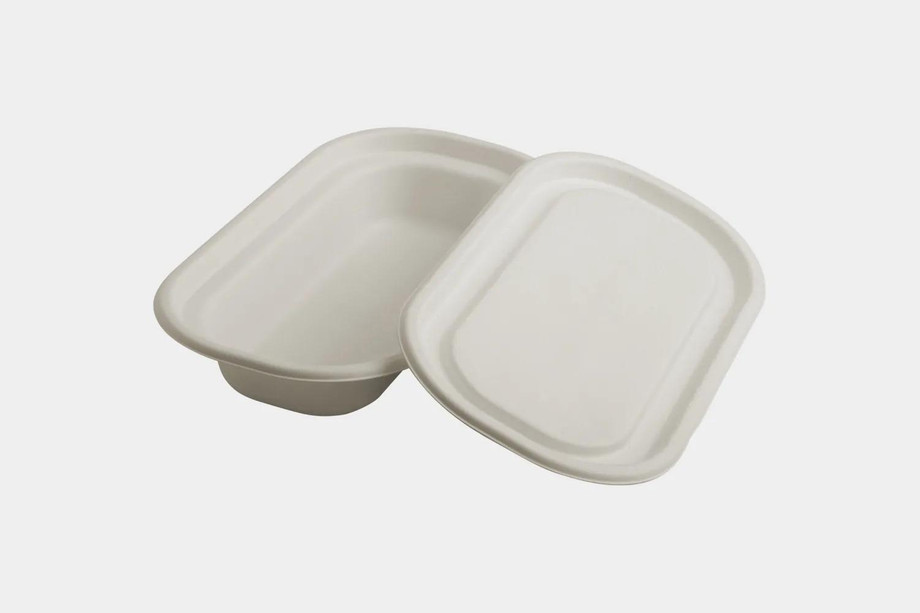As global awareness of plastic pollution rises, the demand for sustainable, eco-friendly alternatives in the packaging industry is stronger. One remarkable solution has emerged from an unlikely source—sugarcane. Bagasse, a byproduct of sugarcane processing, has proven to be an effective, compostable, and environmentally friendly alternative to traditional plastic packaging. In this blog, we explore the benefits, applications, and environmental impact of bagasse food packaging and why it is gaining popularity as a go-to solution for sustainable packaging.
What is Bagasse?
Bagasse is the fibrous material left behind after sugarcane stalks are crushed to extract juice. Traditionally, this material was considered waste or used as fuel in factories, but today, it's repurposed into sustainable products, including disposable food packaging. Bagasse's natural texture, lightweight composition, and biodegradable properties make it ideal for food containers, plates, and cutlery, which are strong enough to handle hot and cold items.
Why Bagasse is a Better Choice than Plastic
Biodegradability and Compostability
While plastic can take hundreds of years to decompose, bagasse food packaging breaks down in weeks or months, especially in composting conditions. This reduces landfill waste and prevents the accumulation of harmful pollutants.
Low Carbon Footprint
Since bagasse is a byproduct of an already established process, its production requires minimal additional resources. Using a renewable resource, bagasse helps lower carbon emissions compared to petroleum-based plastics.
Non-Toxic Decomposition
When bagasse decomposes, it returns to the earth without releasing harmful chemicals or microplastics. This makes it a safe choice for the environment, reducing the long-term impact of single-use food packaging on ecosystems and human health.
Key Benefits of Bagasse Food Packaging for Businesses
Temperature Resistance
Bagasse containers are sturdy and can withstand high temperatures, making them suitable for a variety of hot foods. Unlike certain plastics that warp or leach chemicals when heated, bagasse containers are safe for hot, cold, and microwavable foods.
Durability and Aesthetic Appeal
Bagasse has a natural, textured look that appeals to environmentally conscious customers. Its durability allows it to hold liquids and food without soaking or breaking down quickly.
Brand Image Boost
For businesses, using eco-friendly packaging signals a commitment to sustainability. This can enhance brand image, especially among environmentally aware customers, making it a win-win situation for customer loyalty and environmental stewardship.
Applications of Bagasse Food Packaging
Takeout Containers
Bagasse is commonly molded into takeout boxes and clamshell containers, perfect for hot or cold food items.
Plates and Bowls
Disposable plates and bowls made from bagasse are strong, soak-resistant, and ideal for both sit-down meals and events.
Cutlery and Cups
Bagasse can also be used to produce compostable cutlery and cups, providing a complete, eco-friendly alternative to plastic utensils and drinkware.
Environmental Impact of Switching to Bagasse Packaging
Adopting bagasse food packaging has a positive impact on both local and global scales. By reducing dependency on plastic, the switch helps decrease plastic waste in oceans and reduces pollution caused by plastic production. Bagasse packaging production also minimizes reliance on fossil fuels, offering a greener alternative that aligns with global efforts to curb climate change and reduce greenhouse gas emissions.
Additionally, because bagasse decomposes into non-toxic, natural matter, it returns valuable nutrients to the soil in a composting environment. This eco-friendly disposal method can support soil health, aiding in further agricultural cycles and contributing to a healthier ecosystem.
Is Bagasse the Future of Sustainable Packaging?
As environmental regulations tighten and more consumers shift towards sustainable products, bagasse food packaging is becoming an increasingly viable alternative to plastic. The availability of bagasse-based products will continue to expand, especially as technological advancements make production even more efficient. Innovations in molding and material strengthening are likely to make bagasse suitable for an even wider range of applications in the coming years, offering businesses and consumers sustainable options that don’t compromise on quality or durability.
Conclusion
Bagasse food packaging is more than just a trend—it represents a fundamental shift toward sustainable consumption and waste management. As a byproduct that has minimal environmental impact and multiple functional benefits, bagasse is redefining the way we approach single-use packaging. For businesses looking to make a positive environmental impact, adopting bagasse packaging is an impactful and cost-effective solution. By choosing bagasse, we take a step closer to reducing plastic waste and creating a more sustainable future for the food service industry and the planet.

